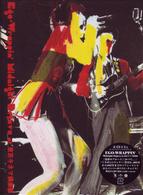Description
Forty years of confrontation in Europe have produced a complex set of conditioned reflexes in western military thinking. With the ending of the Warsaw pact, planning and analysis specialists have had to look again at the basic principles of war: there is no sure ground any more. The analysis of threat and response has been transformed and new patte
Table of Contents
List of illustrations, Notes on contributors, Preface, Introduction, 1 THE LESSONS OF THE 1920s AND MODERN EXPERIENCE, 2 THE CONTRIBUTION OF ORIGINALITY TO MILITARY SUCCESS, 3 ECONOMY OF EFFORT: A PASSIVE PRINCIPLE, 4 LIDDELL HART AND THE INDIRECT APPROACH TO STRATEGY, 5 BURMA, 1943窶�5: WHAT LESSONS FOR THE FUTURE?, 6 INCREASING TEMPO ON THE MODERN BATTLEFIELD, 7 DEPTH FIREPOWER: THE VIOLENT, ENABLING ELEMENT, 8 THE FUTURE OF SURPRISE ON THE TRANSPARENT BATTLEFIELD, 9 THE IMPACT OF THE MEDIA ON THE PROSECUTION OF CONTEMPORARY WARFARE, 10 A STUDY OF EUROPEAN DEFENCE NEEDS IN THE TWENTY-FIRST CENTURY, Index






